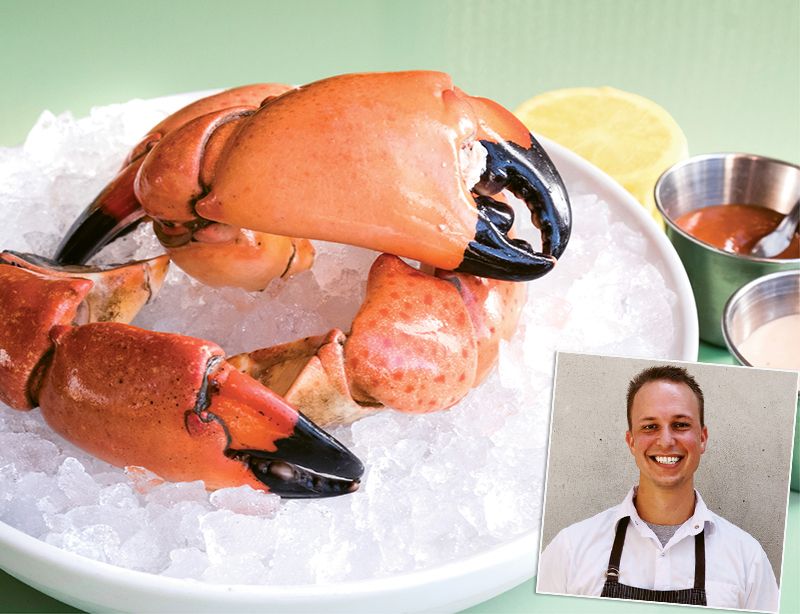The Ordinary’s chef de cuisine, Tori Schumacher, boils up some stone crab claws for a super-seasonal supper

(Serves 4)
1/3 cup plus 3 Tbs. coarse kosher salt, divided
20 cups cold water, divided
4 cups ice
12 claws (2 to 3 per person)
Prepare an ice bath by adding three tablespoons salt to four cups cold water in a large bowl. Stir to dissolve. Taste and adjust seasoning if necessary. It should taste as salty as ocean water. Add ice and set aside.
Bring remaining gallon of water to a boil in a large pot. Season with 1/3 cup salt (this too should taste as salty as ocean water). Return to a rolling boil, then immediately add the crab claws. Cook just until tender, about five to seven minutes, depending on the size of the claw. Remove crab claws and plunge immediately into the prepared ice bath to cool.
Once cold, remove crab from ice bath, pat dry, and refrigerate until ready to serve. To crack the claws, use a small crab mallet or the back of a kitchen spoon. Properly chilled, the claws will remain fresh in the refrigerator for two to three days.
Chef’s Tips:
■ Source fresh: Stone crab claws can be difficult to find, making them very special when harvested fresh. The fresher the claws, the easier they will be to crack. Find them at any local seafood shop while they’re in season.
■ Keep it simple: While crab mallets are available to purchase, stone crab claws aren’t difficult to cook or crack open, Schumacher says. “We just use a standard kitchen spoon to crack the shell.”
■ Size matters: “People can be intimidated by the price of stone crab, but I think it’s well worth the cost,” notes Schumacher. “Try to buy the largest claws that you can find—they’re easier to crack and pick.”
■ Up to you: Schumacher recommends serving stone crab claws according to your own preferences: “I think it’s just like barbecue—regionally, people serve shellfish and seafood with different sauces.“
Meet the Chef: Tori Schumacher (pictured inset above)
Growing up in Denver, Colorado, Tori Schumacher dreamed of one day becoming a “ski bum,” but his mom recognized his love for food and convinced him to go to culinary school instead. It was at Johnson & Wales University in Rhode Island that he learned the seafood techniques he’d take with him to restaurants in Durham and San Francisco before eventually landing in Charleston, where Mike Lata hired him at The Ordinary. “In the three years that I’ve spent here, I’ve learned so much about sourcing not only fish but local shellfish, especially the shrimp and oysters here in the Lowcountry,” Schumacher says. At The Ordinary, he collaborates with a Lowcountry fisherman to serve fresh cuisine and lets his product speak for itself. Such is the case with the restaurant’s stone crab claws: “If you have a well-seasoned pot of water, the flavor will shine through without a lot of effort,” Schumacher says. As for serving, he suggests crab claws be enjoyed warm like lobster, with drawn butter and lemon. A creamy mustard sauce is a classic accompaniment too. “At The Ordinary, we serve them chilled on ice with a mayonnaise-based French cocktail sauce called sauce bagnarotte,” he notes.
Photograph courtesy of (Tori Schumacher) The Ordinary